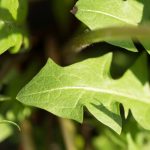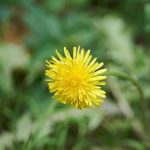Foraging For Edibles – Dandelion
I get commissions for purchases made through links in this post. View our Affiliate Disclaimer.
In many parts of the world, Dandelion are considered an undesirable weed. However, dandelion is a highly nutritious, edible plant that should not be overlooked as a food source! It is rich in vitamins A and K, providing more than your daily minimum requirement for these nutrients.
Dandelion are native to Europe, Asia and North America. Human activity has spread them worldwide. You can therefore find them pretty much in any country.
An alternative name for the dandelion is Lion’s Tooth.
Historical Uses For Dandelion
The ancient Egyptians, Greeks and Romans knew of this plants healing properties and used it as a herbal medicine. The Chinese herbalists have been using them in their traditional medicine for well over a thousand years!
This medicinal herb has been used to treat infections, bile and liver complaints. It is also a diuretic.
Modern Dandelion Uses
Herbicide manufacturing companies and the “lawn culture” have maligned this useful plant for many years as an undesirable weed. It is however starting to gain popularity once again as a plant to be welcomed in your garden. This is due not only to its nutritional or medicinal value, but also due to its benefits to other plants as a companion plant.
A relatively deep taproot brings nutrients closer to the surface which benefits other shallow rooting plants. Being a nitrogen fixing plant similar to bean and pea plants, it also adds nitrogen to the soil. Dandelion plants bring the benefit of attracting pollinating insects to your garden and their release of ethylene gas helps fruit to ripen.
How To Identify Dandelion
This plant is relatively easy to identify.
- The 5 – 25cm (2 – 10 inches) long leaves form a rosette above the root system.
- Leaves are hairless and have a “toothy” margin which is where the alternative name Lions Tooth stems from.
- They can have multiple flowering stems.
- Leaves and flower stems exude a milky, white latex when broken.
- The flower head is yellow to orange and is open during the day, but closed at night.
- Flowers are on a single, leafless stem that can be from 1 – 10 cm (0.4 – 4 inches) above the leaf rosette.
- The flower head consist of florets (mini flowers) that forms a composite flower with a diameter of 2- 5cm (0.75 – 2 inches).
- The flower head matures into the spherical seed head which is well known as a blowball.
- Wind distributes the seed.
[wpsm_column size=”one-third”]

[/wpsm_column]
[wpsm_column size=”one-third”]

[/wpsm_column]
[wpsm_column size=”one-third” position=”last”]

[/wpsm_column]
Edibility
The complete plant, root, leaves and flowers are edible. You can add Dandelion leaves to a salad or cook them as a spinach substitute. You can store the leaves by blanching and freezing them. Juice the flowers and add them to your favourite smoothie. Many different recipes also use dandelion as an ingredient.
Historically, the root has been dried, roasted and ground as a coffee substitute. You can also make a herbal tea from the dried roots and leaves.
Remember to always exercise caution and dont consume a plant you cannot positively identify! Take a look at our post on Guidelines For Foraging For Wild Edibles and stay safe!
You may also enjoy our other Foraging For Edibles posts. Take a look at Amaranth, Purselane and Wood Sorrel
[content-egg module=Amazon template=custom/grid4]
Get more posts like this
Subscribe to our mailing list and get interesting homesteading and green living info and updates to your email inbox.
Thank you for subscribing.
Something went wrong.







